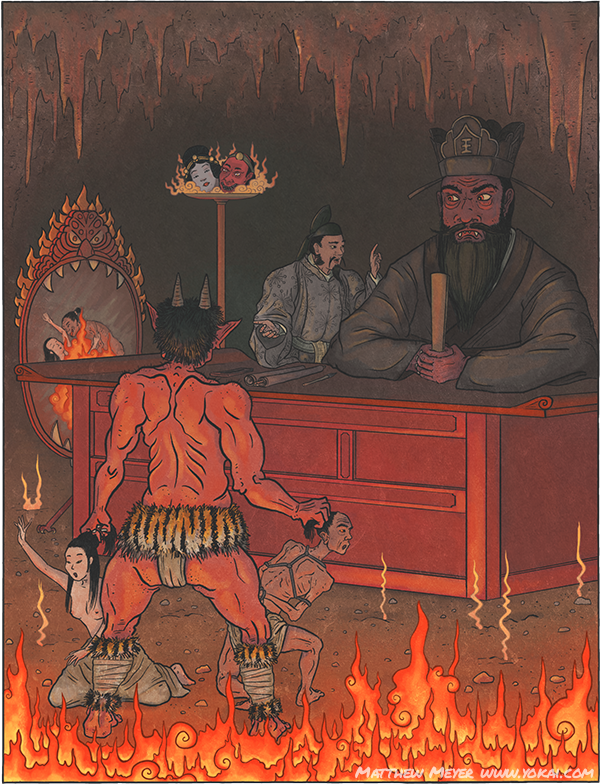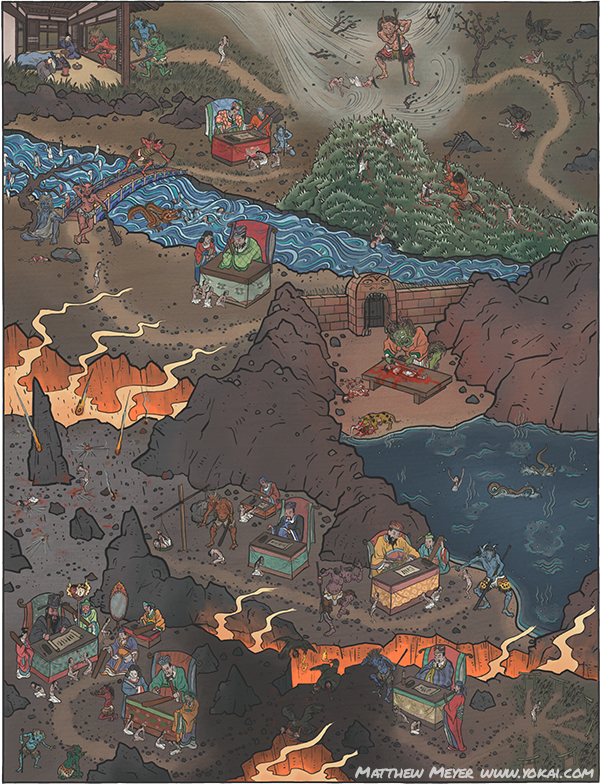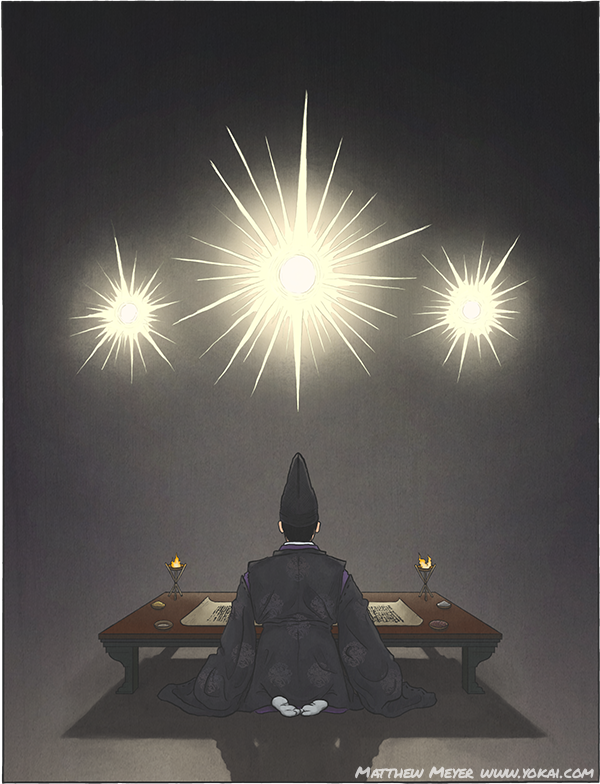Hopefully you were able to locate all of the characters in the large Meido illustration, including last night’s Ono no Takamura. If not, go back and play Where’s Waldo before moving on to today’s illustration, because it’s another big one!
Today’s A-Yokai-A-Day is also from The Hour of Meeting Evil Spirits. It’s a refined version of a pair of blog posts I made a while back detailing Meido and Jigoku. In case you haven’t figured it out yet, while Meido is the Japanese path of the underworld, Jigoku is hell itself, where everyone who doesn’t get a quick reincarnation goes.
As with Meido, Japanese Jigoku is based on the Chinese Taoist/Buddhist syncretism imported from India via central Asia. For the most part, the cosmological realms in Japanese Buddhism are very similar to the realms in China and India. There are a few minor differences, and of course each Buddhist tradition has its own variations as well.
In general, Japanese Buddhism has 6 realms of reincarnation: Ten-dō, the realm of gods and demigods; Ningen-dō, the realm of humans; Shura-dō, the realm of ashura, Chikushō-dō, the realm of animals; Gaki-dō, the realm of hungry ghosts; and Jigoku-dō, the realm of hell. Of these, only two realms are considered to be “happy” rebirths—Ten-dō and Ningeon-dō. These are the only two realms where you get to feel pleasure. Of the remaining realms, the realm of Jigoku is obviously the worst, followed by Gaki-dō. The realm of animals is not considered all that good because animals are ruled by their desires and thus cannot obtain enlightenment. They’re not exactly suffering, but the life of an animal is to eat or to be eaten. Shura-dō is an unhappy realm because these demigods/demons have great power, but are always fighting each other and plagued by jealousy that they aren’t in one of the better realms.
But Jigoku is the focus of the day, and it’s much more than just one realm. In fact, Jigoku, and each of the realms of rebirth, could be viewed as an entire separate universe from the one we live in. There are generally said to be eight hot hells and eight cold hells, and each of these levels has countless sub-levels and mini-hells. Other counts list many, many more hells than just the 16 main ones—hundreds, thousands, or even hundreds of thousands. However, the eight hot hells are generally considered the “main” hells, and are the main focus of tonight’s entry.
This should be another fun illustration for those who like tiny details. Zoom and and take a close look at everything that’s going on! Click below to read the entry on yokai.com:







